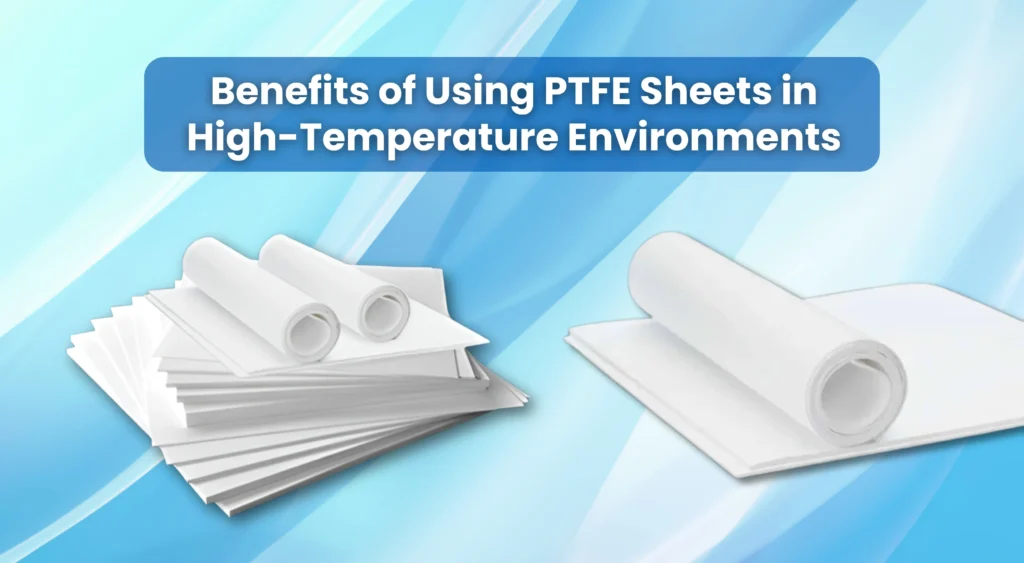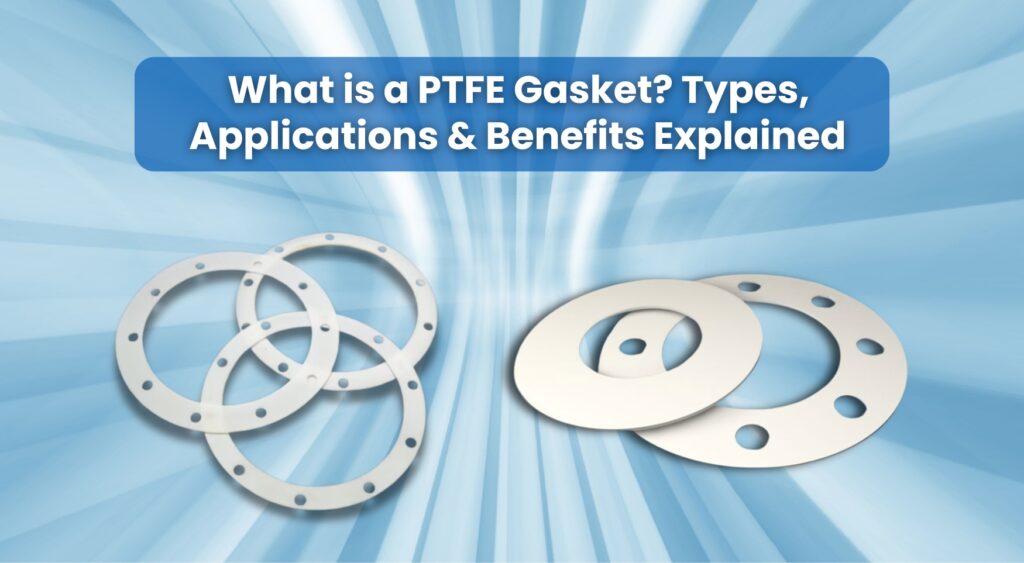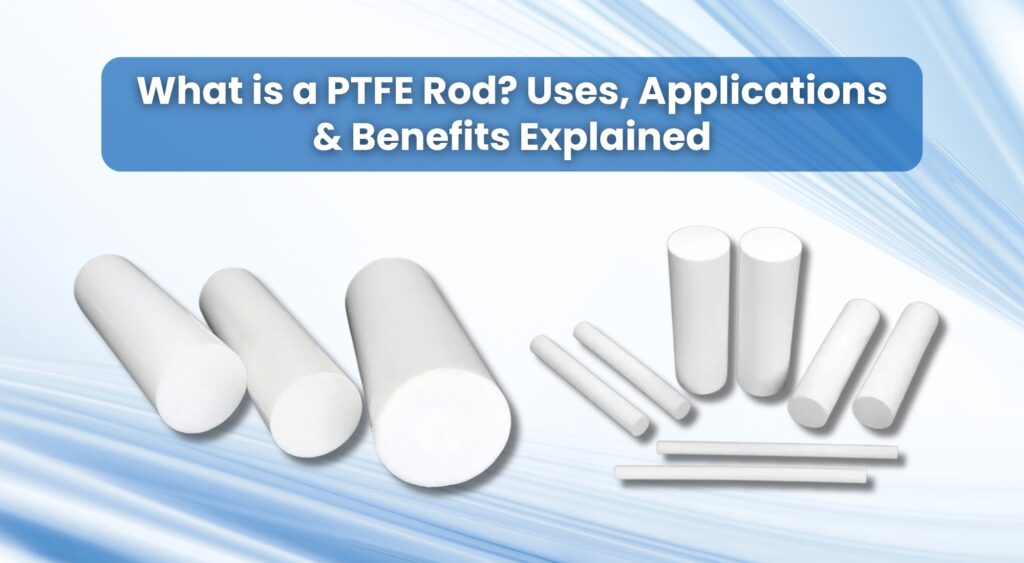Manufacturers make PTFE sheets from polytetrafluoroethylene. This special plastic can handle high temperatures without losing strength. Its smooth texture and non-stick surface are great for many industries. They also resist chemicals, adding to their usefulness. PTFE sheets are most effective in high-temperature environments.
You’ll find them in baking trays at home and as protective liners in factories. PTFE sheets are strong and easy to clean. They are great for both homes and businesses. In this blog, we discuss the benefits of PTFE sheets for heat. We also explain why they are often chosen over other materials for tough, heat-heavy tasks.
What Are PTFE Sheets and Why Do They Work So Well?
People consider flat pieces made of polytetrafluoroethylene, another long word for that matter. Polytetrafluoroethylene, commonly known as plastic, can withstand high temperatures. PTFE sheets are great for this job. They are smooth and tough, which makes them safe to use.
They go by the name of non-stick sheets, as nothing can stick to them. Various machinery and kitchen equipment use them. They are quite safe in the presence of chemicals as well. Welding, heat, or thermally induced decomposition has little impact on these sheets. You can thus use these sheets in ovens, factories, and laboratories.
- Offers resistance to temperatures that are extremely high.
- Non-stick surface
- Chemical resistance
- Low friction
- Easy cleaning
Benefits of PTFE Sheets in High-Temperature Environments
Some industries use PTFE sheets where heat is a daily challenge. They can keep performing well even when other materials start to melt, burn, or change shape. Many high-heat applications adopt these sheets because of their excellent qualities.
1. Exceptional Heat Resistance
PTFE sheets can handle continuous temperatures up to about 260°C. This depends on how they are made. This property allows them to work well in ovens and furnaces. They can also handle industrial heaters without losing strength or shape. Their heat capacity enables long-term functionality, even in areas with sudden temperature changes.
2. Non-Stick Surface
A well-known feature of PTFE sheets is their non-stick surface. Food from heaters, whether from machines, adhesives, or molten materials, struggles to stick. This helps with cleaning and makes processes smoother. It is especially useful on manufacturing lines and in baking equipment.
3. Excellent Chemical Resistance
PTFE sheets resist most acids, bases, and solvents, even at high temperatures. These sheets are safe to use in:
- Chemical processing plants
- Lab equipment
- Food plants
They won’t corrode or contaminate. They are non-reactive, so they provide a safe way to handle sensitive products.
4. Low Friction Properties
Friction is minimal when surfaces slide against PTFE. This helps machines where moving parts generate heat. Lower friction means less wear and energy loss. It also reduces heat buildup. This helps machinery have a longer lifespan and operate with greater efficiency.
5. Moisture Resistance
Being water-repellent, PTFE sheets do not absorb water even in a hot and humid atmosphere. Water absorption causes swelling and warping in almost all plastic materials. PTFE sheets work well in wet steam settings. This includes food processing plants and chemical manufacturing industries.
6. Lightweight Yet Strong
These sheets possess natural structural strength and stability while being lightweight. Their lightweight nature allows for better handling during transport as well as easier installation procedures. The sheets maintain excellent performance when exposed to high temperatures.
7. Long Service Life
The best material for long service life is PTFE because it resists heat and chemicals and wears well. The sheets maintain their structural integrity and form in high-temperature conditions. The durability of these materials leads to decreased replacement frequency and lowered maintenance expenses.
8. Electrical Insulation
PTFE sheets provide excellent electrical insulation, even at high temperatures. This helps prevent stray electrons. Insulation is needed for wires, cables, or components that are exposed to heat. This ensures safety and stability in both industrial and household settings.
Conclusion
In high-heat settings, PTFE sheets are among the most dependable and flexible materials out there. They stand up to heat better than most materials. They do not stick, slide with ease, and resist attack by strong chemicals. They work in ovens, factories, labs, and kitchens.
They clean quickly and last forever. They are light and safe compared to metal or rubber. PTFE sheets can work when hot and when chilled. This is why they are so useful. The existence of this saving of time, cleaning, and money is obvious. Now, you can see why the PTFE sheet is a smart tool. It stays effective even under heat. This makes them a good choice in high-temperature environments.
Frequently Asked Questions
How much heat can PTFE sheets handle?
When PTFE sheets experience extended periods of extremely high temperatures, they will completely lose their strength, yet they maintain continuous operation at 260°C.
Are PTFE sheets safe to be used in food?
PTFE sheets maintain food safety standards because they remain inactive with food substances while preserving the original flavor profile.
Do PTFE sheets absorb water?
PTFE materials show complete water resistance through their inability to take in moisture from humid environments.
What are the uses of PTFE sheets?
PTFE sheets function in multiple applications, including oven operations and factory environments, and both chemical plant settings and electrical insulation systems, and food processing machinery.



